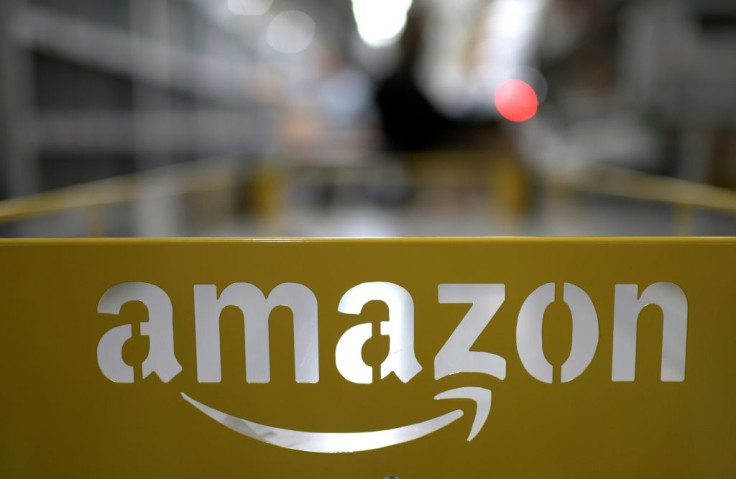One-Day Shipping Could Add Over $50 Billion To Amazon's Top Line

Amazon's (NASDAQ:AMZN) push to get items to customers' doorsteps faster hasn't come cheap. But the increased spending on shipping and fulfillment on top of capital expenditures and leases on air hubs and plane leases ought to be worth it in the long run for investors.
There are three ways Amazon will generate more revenue from one-day shipping. First, it will increase the amount of interest in Prime, pushing customer sign-ups beyond a sticking point where subscriptions started to stagnate. Second, Prime members will spend more on Amazon than they did previously. And finally, building out Amazon Logistics to support one-day shipping from Amazon's marketplace will also open the door for the company to sell delivery services to other businesses.
Convincing the other 50%
Over half of American shoppers will subscribe to Amazon Prime next year. At this point, there isn't anyone who hasn't heard of Amazon Prime, and most of those people understand the full range of benefits they can get from it. Amazon has taken steps over the last few years to expand those benefits, most notably extending Prime benefits to Whole Foods Market, which it acquired in 2017.
One-day shipping is a considerable value for some shoppers compared to two-day shipping. If an item can get from Amazon's warehouse to a customers' door by tomorrow, shoppers may be able to skip a run to the store -- and potentially avoid paying more. In fact, many existing Prime members say they're more likely to buy items on Amazon with one-day shipping than to buy the same item in the store. The convenience has real value and could be the deciding factor that pushes some consumers to pay for the $119 annual subscription.
Prime memberships show up in Amazon's subscription services revenue line item. That metric includes various other subscriptions as well, but Prime is the biggest factor. Subscription services revenue increased 35% last quarter, a stark slowdown from the 52% it posted in the third quarter last year. That number is also down from the 39% growth it posted in the second quarter. Investors should watch for the slowdown to stabilize as more consumers sign up for Prime to take advantage of one-day shipping.
Getting Prime members to spend more
One-day shipping can be the difference-maker between buying something from Amazon or looking somewhere else. In a recent survey conducted by Piper Jaffray, 55% of Prime members said they would use Amazon.com more if one-day shipping were more widely available. The average increase in expected usage is about 30%.
As Amazon expands its one-day shipping availability, the increased spend from Prime members buying items with the speedy delivery could translate into $40 billion to $50 billion in additional revenue in the U.S., analyst Michael Olson projects.
Investors have already seen the impact. U.S. marketplace revenue accelerated in the second and third quarters, and CFO Brian Olsavsky said there's a direct impact from one-day shipping on revenue growth.
Keep in mind that the increased spend per Prime member has a compounding effect on top of the increased interest in Prime mentioned earlier. That could mean a lot more Prime members spending a lot more money on Amazon on average.
Building Amazon Shipping
Amazon began offering shipping services to select third-party merchants early last year, and it has expanded the efforts into a full-blown business. Amazon Shipping now offers delivery services for select businesses, including non-Amazon deliveries. As Amazon builds out Amazon Logistics -- its homegrown fulfillment network -- it could support more non-Amazon deliveries by selling excess capacity on planes and trucks.
Amazon already delivers more packages through Amazon Logistics than other delivery services. And within a few years, it'll be the biggest domestic delivery service by volume across all packages. That kind of scale means it could offer very competitive rates subsidized by Amazon's own volume.
Amazon Logistics could be handling between 1.5 billion and 3.5 billion non-Amazon packages by 2022, according to an estimate from Morgan Stanley analysts, adding at least $7 billion in revenue to Amazon's overall business. Importantly, that revenue ought to produce a relatively strong operating margin compared to Amazon's retail operations, so it'll have an outsized impact on its bottom line.
While Amazon is spending billions on building out its logistics network to support one-day shipping, it should see a good return on its investment. Overall, Amazon should add at least $50 billion to its top line in North America alone. That's about 31% of the company's revenue in the region over the last four quarters.
This article originally appeared in the Motley Fool.
John Mackey, CEO of Whole Foods Market, an Amazon subsidiary, is a member of The Motley Fool's board of directors. Adam Levy owns shares of Amazon. The Motley Fool owns shares of and recommends Amazon. The Motley Fool has a disclosure policy.





















